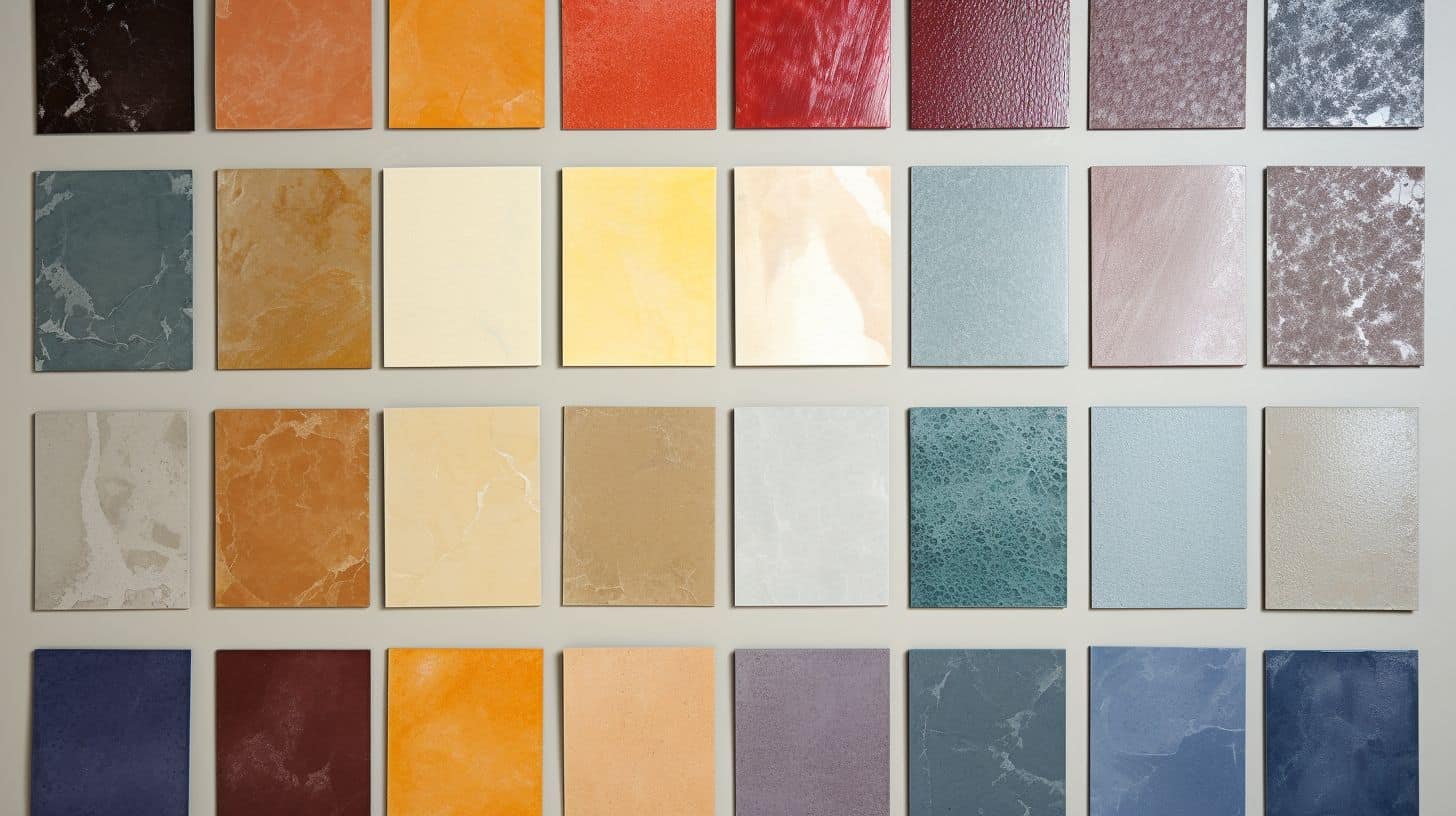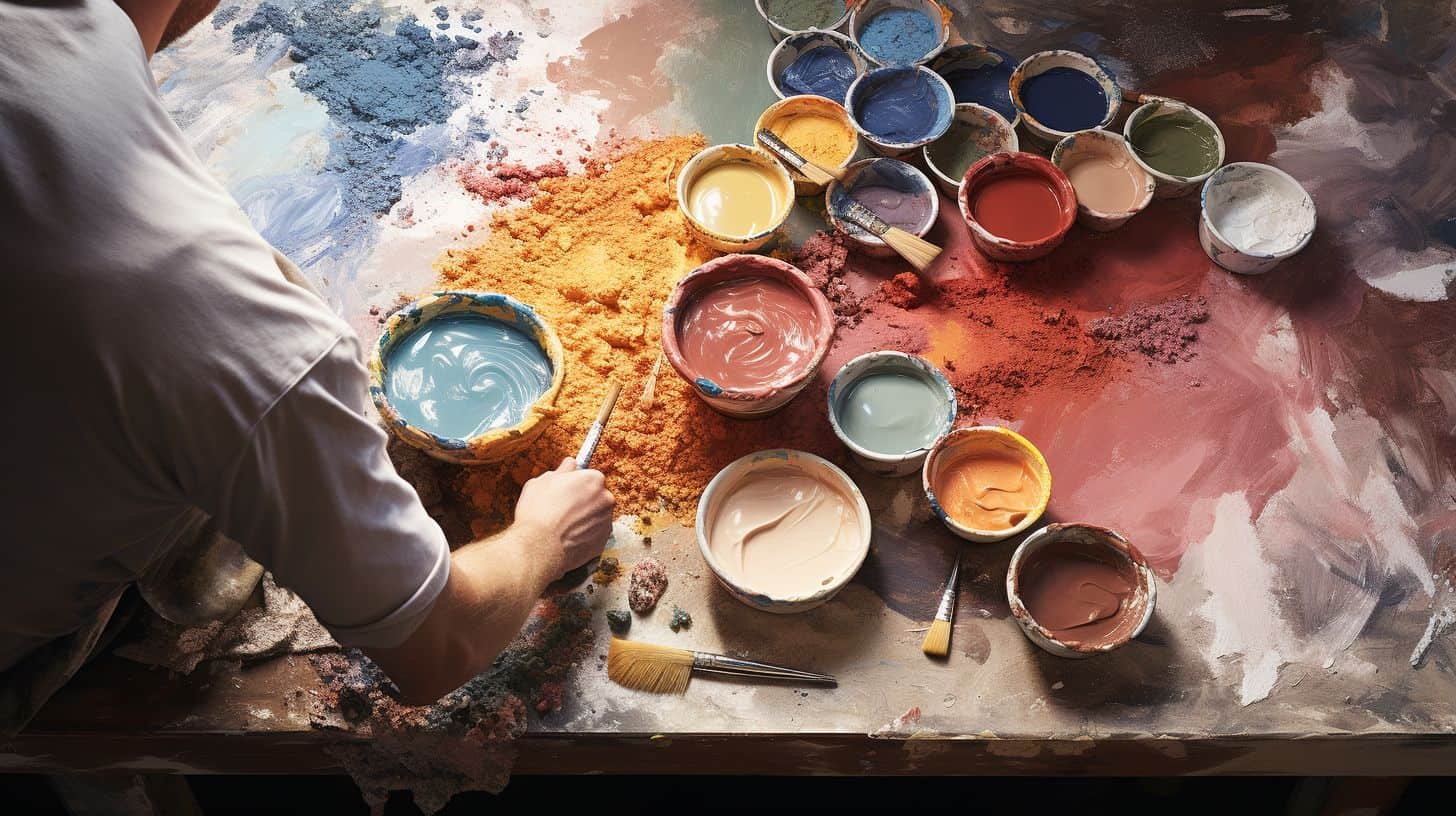The Importance of Tinting and Colouring in Venetian Plaster
Tinting and colouring are essential aspects of Venetian plaster applications, allowing for a vast range of aesthetic possibilities. The ability to customise colours enables you to create unique finishes that enhance the beauty and character of any space. Whether aiming for subtle, natural hues or bold, vibrant tones, the proper tinting and colouring techniques can significantly impact the overall visual appeal of the plaster.
How Custom Colours Enhance the Aesthetic Appeal of Plaster Finishes
Custom colours can transform a Venetian plaster finish from ordinary to extraordinary. By carefully selecting and mixing pigments, you can tailor the plaster to complement any design scheme, highlighting architectural features and creating striking visual effects. Custom colours provide an opportunity to infuse personal style and creativity into a project, ensuring that the final result is both distinctive and harmonious with the surrounding environment. In a city like Sydney, where interior design often reflects diverse cultural influences and contemporary trends, the ability to create bespoke colours is a valuable skill that can set your work apart.

Mixing Pigments
Types of Pigments
Natural Pigments
Natural pigments are derived from organic sources such as plants, minerals, and clay. These pigments offer a wide range of subtle, earthy tones that are ideal for creating natural-looking finishes.
- Benefits: Eco-friendly, sustainable, and often provide unique, nuanced colours.
- Considerations: May vary in consistency and colour strength, requiring careful measurement and mixing.
Synthetic Pigments
Synthetic pigments are man-made and designed to provide vibrant, consistent colours. They are widely used in Venetian plaster applications due to their reliability and ease of use.
- Benefits: Consistent colour, wide range of hues, and easy to mix.
- Considerations: Some synthetic pigments may not be as environmentally friendly as natural options.
Mineral Pigments
Mineral pigments are inorganic compounds known for their durability and intense colours. They are often used for projects requiring bold, long-lasting hues.
- Benefits: Highly durable, resistant to fading, and offer intense, vibrant colours.
- Considerations: Can be more expensive and may require special handling.
Preparing the Plaster for Tinting
Base Plaster Selection
Choosing the right base plaster is crucial for successful tinting. The base plaster should be compatible with the pigments you plan to use and should be of high quality to ensure a smooth, consistent finish.
- Types of Base Plaster: Lime-based plaster for traditional applications, and acrylic-based plaster for more modern finishes.
- Compatibility: Ensure the base plaster and pigments are compatible to prevent issues such as separation or uneven colouring.
Measuring Pigments
Accurate measurement of pigments is essential to achieve consistent colouring. Using precise measuring tools and techniques helps maintain the desired hue and ensures repeatability.
- Tools: Use digital scales for accurate measurement, and measuring spoons or cups for smaller quantities.
- Techniques: Measure pigments by weight for consistency, especially when mixing large batches.
Step-by-Step Mixing Guide
Mixing Ratios
Understanding and following the correct mixing ratios is key to achieving the desired colour intensity and consistency.
- Recommended Ratios: Start with a small percentage of pigment (e.g., 1-5% by weight) and adjust based on the desired hue.
- Adjustments: Gradually increase the amount of pigment if a deeper colour is needed, mixing thoroughly between additions.
Blending Techniques
Proper blending ensures that the pigments are evenly distributed throughout the plaster, preventing streaks and patches.
- Methods: Use a mechanical mixer or a paddle mixer attached to a drill for thorough blending.
- Steps:
- Add Pigments to Water: Dissolve pigments in water before adding to the plaster mix to ensure even distribution.
- Mix Thoroughly: Combine the pigment solution with the plaster, mixing until the colour is uniformly distributed.
- Check Consistency: Ensure the mixture is smooth and free of lumps.
Testing Colours
Testing small batches of tinted plaster helps to ensure that the colour is correct before applying it to the entire surface.
- How to Test Small Batches:
- Prepare a Sample Board: Apply a small amount of the tinted plaster to a sample board.
- Dry and Cure: Allow the sample to dry and cure fully to see the true colour.
- Evaluate the Colour: Assess the sample under different lighting conditions to ensure it meets your expectations.
- Adjust if Necessary: Make any necessary adjustments to the pigment ratios and retest until the desired colour is achieved.
By carefully selecting and mixing pigments, you can achieve a wide range of colours and finishes with Venetian plaster. Accurate measurement, thorough blending, and diligent testing are essential steps to ensure consistent and beautiful results.
Techniques for Consistent Colouring
Application Methods
Layering Techniques
Layering is crucial for building up colour depth and achieving a consistent finish in Venetian plaster applications. Applying multiple thin layers allows for better control over the colour intensity and helps avoid streaks and patches.
- Applying Multiple Layers:
- First Layer: Apply a thin, even coat of tinted plaster, ensuring full coverage.
- Subsequent Layers: Allow each layer to dry completely before applying the next. Build up the colour gradually to achieve the desired depth.
- Final Layer: Apply the final layer with smooth, overlapping strokes to ensure a seamless finish.
Feathering Edges
Feathering the edges of each layer helps to blend the plaster seamlessly and avoid visible lines where sections overlap.
- Techniques for Blending Edges:
- Light Pressure: Use light, consistent pressure when feathering the edges.
- Overlapping Strokes: Use overlapping strokes to blend the edges smoothly into the surrounding plaster.
- Gradual Tapering: Gradually taper the pressure towards the edge to create a smooth transition.
Even Coverage
Ensuring even coverage is key to preventing colour variation and achieving a uniform finish.
- Ensuring Consistent Application:
- Controlled Movements: Use controlled, even strokes to apply the plaster.
- Consistent Thickness: Maintain a consistent thickness across the surface to avoid patches and streaks.
- Monitor Application: Regularly check your work to ensure even coverage and make adjustments as needed.

Tools for Consistent Colouring
Mixing Tools
Using the right tools for mixing pigments into the plaster is essential for achieving a uniform colour.
- Best Tools for Blending Pigments into Plaster:
- Mechanical Mixer: A paddle mixer attached to a drill ensures thorough blending.
- Stirring Sticks: For small batches, use stirring sticks to mix the pigments and plaster.
Application Tools
Choosing the right tools for applying tinted plaster helps to ensure even colour distribution.
- Trowels:
- Stainless Steel Trowels: Ideal for smooth application and even coverage.
- Rounded Edge Trowels: Help to prevent sharp lines and ensure a polished finish.
- Brushes and Rollers:
- Brushes: Useful for detailed work and edges.
- Rollers: Can be used for initial layers to cover large areas quickly.
Colour Meters
Using technology to measure and maintain colour consistency can be highly effective in large-scale projects.
- Using Technology to Measure and Maintain Colour Consistency:
- Colour Meters: Devices that measure the exact colour of the plaster to ensure consistency.
- Digital Colour Matching: Tools and apps that help match the colour of the plaster to a specific shade.
Common Issues and Solutions
Colour Variation
Colour variation can occur due to inconsistent mixing, application techniques, or environmental factors.
- Identifying and Correcting Uneven Colour Application:
- Consistent Mixing: Ensure pigments are thoroughly mixed into the plaster.
- Even Application: Apply the plaster evenly with controlled strokes.
- Environmental Control: Maintain consistent temperature and humidity during application.
Pigment Separation
Pigment separation can lead to uneven colouring and poor finish quality.
- Preventing Pigments from Separating During Mixing and Application:
- Proper Mixing: Mix pigments into water first, then blend into the plaster.
- Stirring During Application: Regularly stir the plaster mixture to keep pigments evenly distributed.
Fading and Discolouration
Fading and discolouration can be caused by exposure to sunlight, moisture, or improper sealing.
- Techniques to Ensure Long-Lasting Colour:
- UV-Resistant Pigments: Use pigments that are resistant to UV light to prevent fading.
- Proper Sealing: Apply a protective sealer to the finished plaster to protect against moisture and environmental damage.
- Regular Maintenance: Perform regular maintenance and touch-ups to keep the colour vibrant.
By following these techniques, you can achieve consistent, beautiful colouring in your Venetian plaster projects. Proper application methods, the right tools, and addressing common issues ensure a professional and visually appealing finish.
Custom Colours
Creating Unique Shades
Custom Colour Blending
Creating custom colours allows for unique and personalised finishes in Venetian plaster applications. This process involves blending different pigments to achieve bespoke hues that match specific design requirements.
- Techniques for Creating Bespoke Colours:
- Start with a Base Colour: Begin with a neutral base colour and gradually add pigments to achieve the desired shade.
- Layering Pigments: Layer different pigments to create depth and complexity in the colour.
- Incremental Adjustments: Make small adjustments to the pigment ratios to fine-tune the colour.
Client Collaboration
Working closely with clients ensures that the final colour meets their expectations and design vision.
- Working with Clients to Achieve Their Desired Colours:
- Consultation: Discuss colour preferences, design goals, and any specific requirements with the client.
- Sample Boards: Create sample boards with different colour options for client review and approval.
- Feedback and Adjustments: Incorporate client feedback and make necessary adjustments to the colour mix.
Sample Boards
Sample boards are essential tools for showcasing custom colours and helping clients visualise the final result.
- Creating Sample Boards to Showcase Custom Colours:
- Preparation: Prepare small sample boards using the same plaster mix and application techniques intended for the project.
- Multiple Options: Present several colour options to provide clients with a range of choices.
- Lighting Conditions: Display sample boards under different lighting conditions to show how the colours will look in various environments.
Using Tinted Plaster in Design
Accents and Features
Tinted plaster can be used to highlight architectural features and create focal points within a space.
- Highlighting Architectural Features with Custom Colours:
- Accent Walls: Use custom colours to create striking accent walls that draw attention and add visual interest.
- Details and Trim: Apply tinted plaster to architectural details such as columns, mouldings, and trims to enhance their appearance.
Colour Schemes
Integrating tinted plaster into overall design schemes helps to create cohesive and harmonious spaces.
- Integrating Tinted Plaster into Overall Design Schemes:
- Complementary Colours: Choose plaster colours that complement the existing colour scheme and design elements.
- Contrast and Balance: Use contrasting colours strategically to create balance and visual appeal.
Trends and Styles
Staying updated on popular colour trends and styles ensures that your work remains relevant and appealing.
- Popular Colour Trends and How to Incorporate Them:
- Neutral Tones: Soft, neutral tones are timeless and versatile, suitable for various design styles.
- Bold Hues: Vibrant, bold colours can make a statement and are perfect for modern, eclectic designs.
- Natural Shades: Earthy, natural shades provide a calming and organic feel, ideal for contemporary and rustic interiors.
Tips for Success
Consistent Documentation
Keeping detailed records of mixing ratios, techniques, and client preferences ensures consistency and repeatability.
- Keeping Detailed Records of Mixing Ratios and Techniques:
- Document Everything: Record the exact amounts of pigments and base plaster used for each colour mix.
- Notes on Techniques: Include notes on application techniques and any adjustments made during the process.
Ongoing Testing
Regularly testing colours throughout the project helps to maintain quality control and achieve the desired results.
- Regularly Testing Colours to Maintain Quality Control:
- Periodic Checks: Test small batches of plaster periodically to ensure colour consistency.
- Adjust as Needed: Make any necessary adjustments to the pigment ratios based on test results.
Client Feedback
Incorporating client feedback throughout the process ensures that the final result aligns with their vision and expectations.
- Incorporating Client Feedback to Refine Colour Choices:
- Regular Updates: Provide clients with regular updates on the progress and any colour adjustments.
- Responsive Adjustments: Be flexible and responsive to client feedback, making changes as needed to achieve their desired outcome.
By mastering the techniques for creating custom colours and integrating tinted plaster into design schemes, you can deliver stunning and personalised finishes that elevate any space.
Conclusion
Recap of the Importance of Tinting and Colouring in Venetian Plaster
Tinting and colouring are integral to the Venetian plastering process, allowing for a wide array of aesthetic possibilities. The ability to customize colours enhances the visual appeal of plaster finishes, enabling you to create unique and personalised designs. Proper tinting and colouring techniques ensure that the plaster not only looks beautiful but also maintains its vibrancy and consistency over time.
Summary of Key Techniques and Tips for Achieving Consistent, Custom Colours
- Mixing Pigments: Understand the types of pigments (natural, synthetic, and mineral) and use accurate measuring and blending techniques to achieve consistent colours.
- Application Methods: Employ layering techniques, feathering edges, and ensuring even coverage to maintain uniformity in colour.
- Tools for Consistent Colouring: Use the appropriate mixing and application tools, and consider using colour meters for precise colour matching.
- Custom Colours: Collaborate with clients to create bespoke colours, use sample boards to showcase options, and integrate tinted plaster into design schemes.
- Tips for Success: Keep detailed records, perform ongoing testing, and incorporate client feedback to refine and perfect the colour choices.
Final Thoughts on the Impact of Colour in Enhancing Plaster Finishes
The right colour can transform a space, highlighting architectural features, complementing design elements, and creating a cohesive and visually appealing environment. By mastering the techniques of tinting and colouring Venetian plaster, you can offer clients a unique and personalised finish that elevates the overall aesthetic of their interiors.
Tinting and Colouring Services by Venetian Plasterer in Sydney
At Venetian Plasterer, we specialise in tinting and colouring Venetian plaster to create stunning, custom finishes for our clients. Providing expert Venetian plaster colours in Sydney, our skilled artisans meticulously blend pigments and apply plaster to achieve beautiful, consistent colours that enhance any space. Whether you desire subtle, natural hues or bold, vibrant tones, we ensure that every project meets the highest standards of quality and aesthetic appeal. Trust Venetian Plasterer for all your Venetian plaster needs in Sydney, and experience the transformative power of custom-coloured finishes.
Related
Applying Metallic Venetian Plaster: Preparation, Layering Techniques, Achieving Uniform Effects

